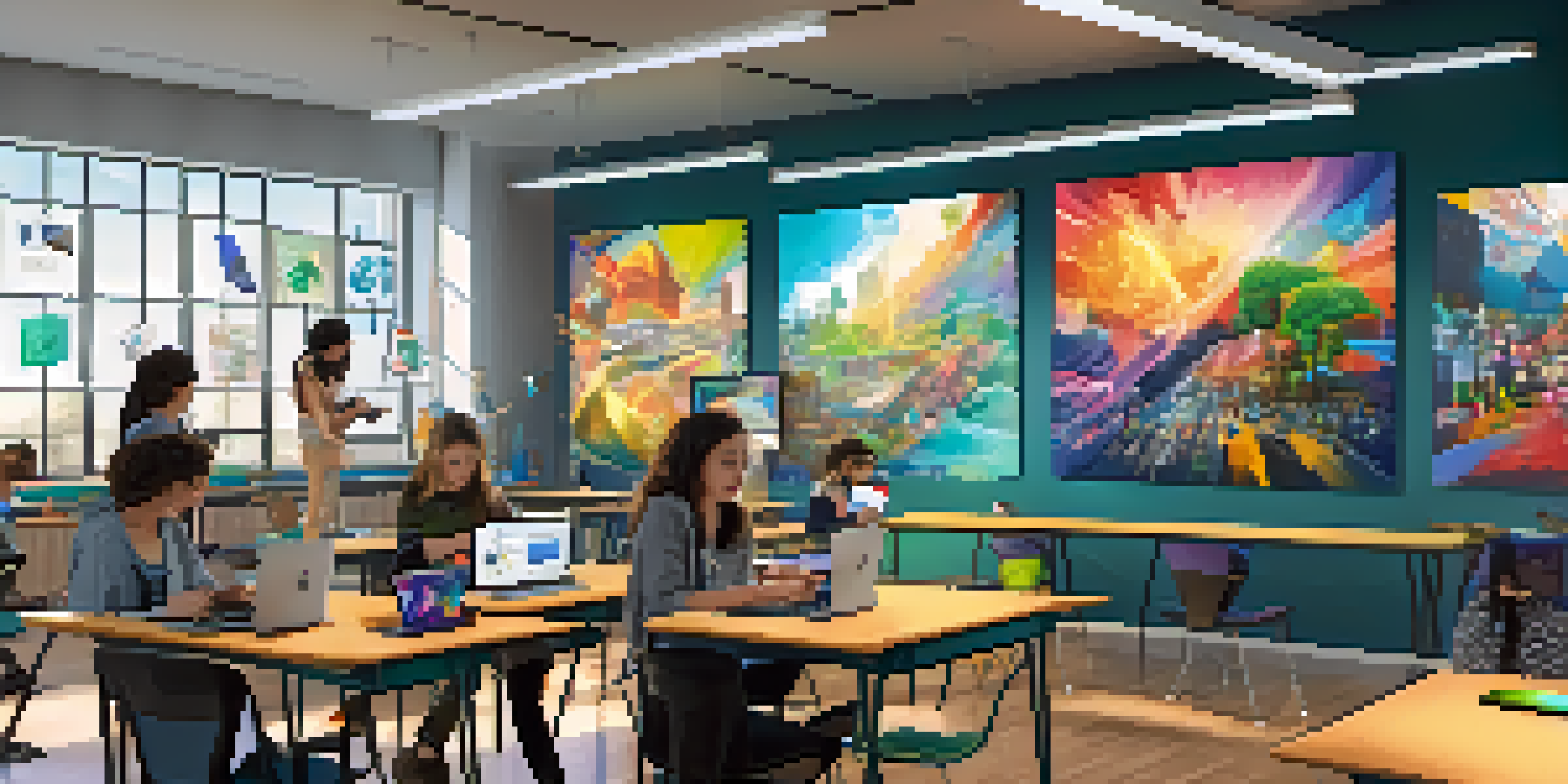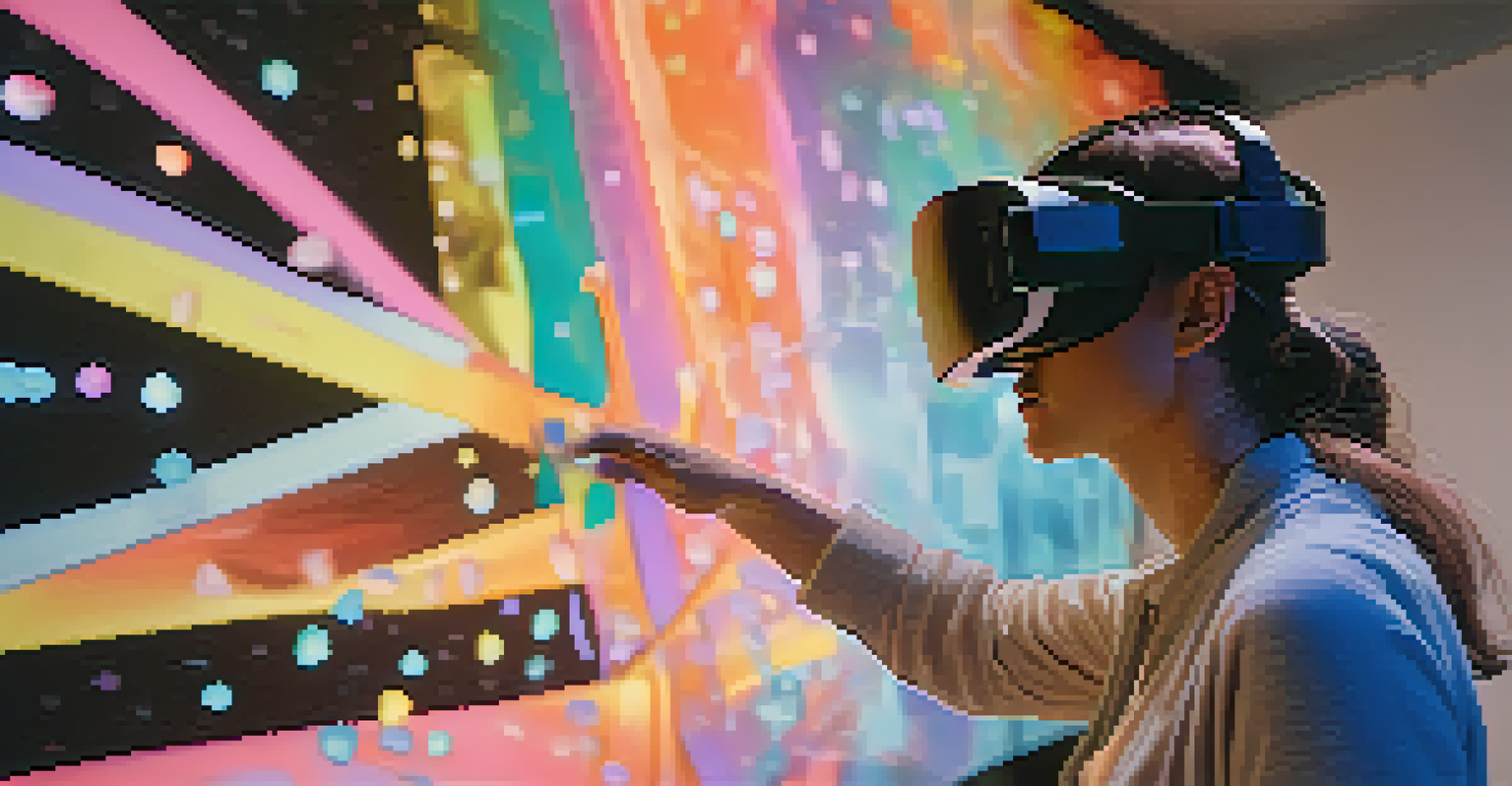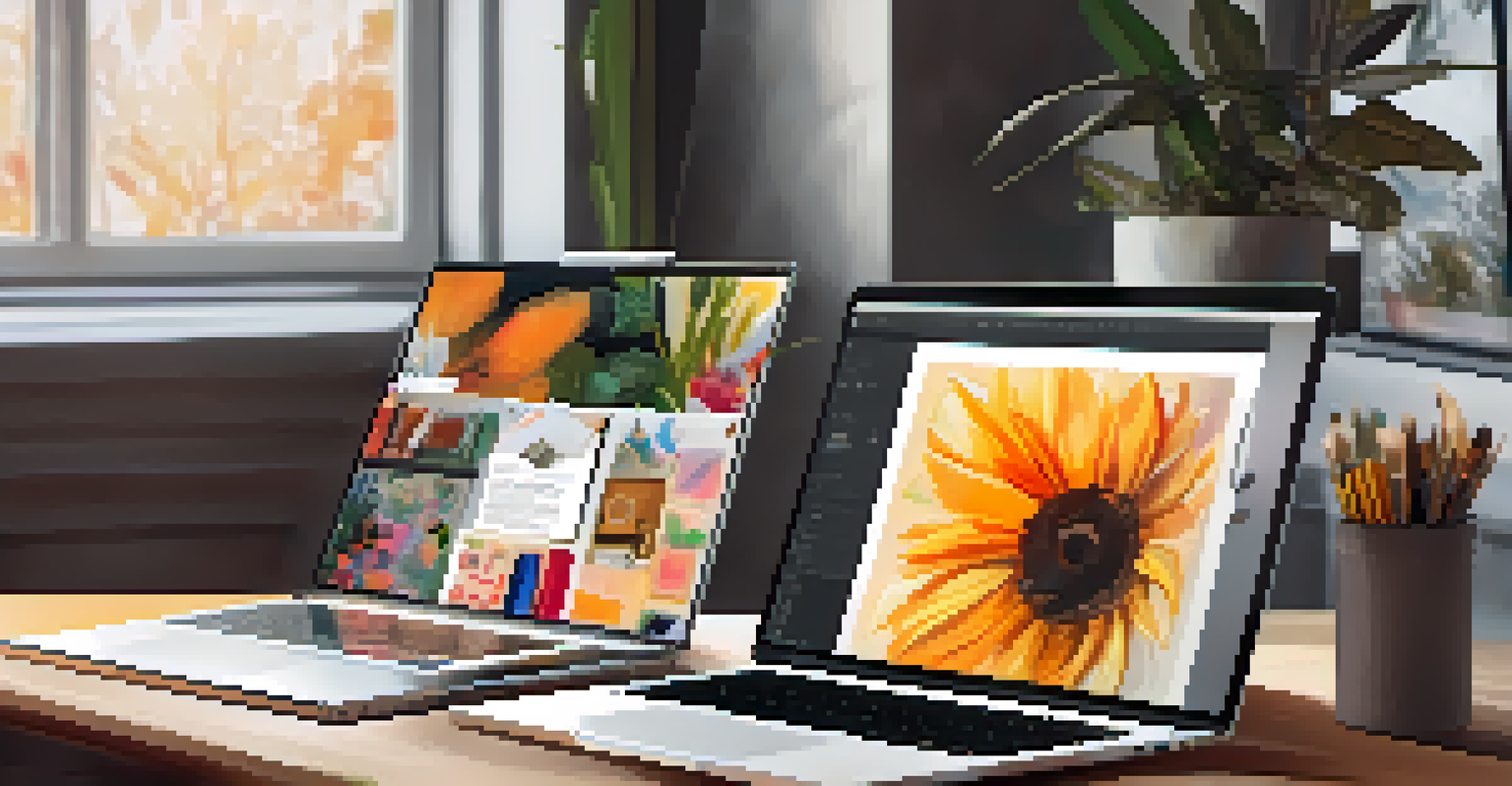Future Trends in Art Education: Embracing Technology

The Role of Technology in Modern Art Education
Technology has become an integral part of art education, transforming how students learn and create. Digital tools like graphic design software and 3D modeling programs have made art more accessible and versatile. Students can explore new mediums that were previously unavailable, expanding their creative horizons.
Technology is best when it brings people together.
Additionally, art educators are using technology to enhance their teaching methods. Interactive lessons, virtual studios, and online critiques allow for more dynamic learning experiences. This shift not only engages students but also prepares them for a technology-driven art world.
As we look to the future, embracing technology will continue to redefine art education. It's essential for institutions to adapt and incorporate these tools, ensuring that students are equipped with the skills needed for a rapidly evolving creative landscape.
Online Learning Platforms: A New Frontier
The rise of online learning platforms has revolutionized art education, making it more accessible than ever. Students from diverse backgrounds can now enroll in courses offered by renowned institutions, no matter where they live. This democratization of art education fosters a richer, more inclusive creative community.

These platforms often feature interactive elements such as video tutorials, online workshops, and peer critiques, making learning engaging and collaborative. For instance, platforms like Skillshare and Udemy allow artists to share their expertise while learners can connect with peers worldwide.
Tech Transforms Art Education
Technology is enhancing art education by providing new tools and methods that expand creative possibilities for students.
As more educators embrace online platforms, we can expect a surge in innovative teaching methods. This shift not only expands opportunities for students but also encourages educators to think outside the box, leading to a more dynamic art education landscape.
Virtual Reality: A New Dimension in Art Learning
Virtual reality (VR) is emerging as a groundbreaking tool in art education, offering immersive experiences that traditional methods cannot match. Students can step into virtual galleries, explore three-dimensional artworks, and even create in a virtual space. This hands-on approach enhances their understanding of spatial relationships and artistic techniques.
The future belongs to those who believe in the beauty of their dreams.
Moreover, VR encourages experimentation without the fear of making permanent mistakes, allowing students to push their creative boundaries. Imagine a student sculpting in a VR environment, where they can manipulate materials and forms in ways that would be impossible in the physical world.
As VR technology advances, its integration into art education will likely become more widespread. This exciting trend opens up new possibilities for creativity, inspiring the next generation of artists to think beyond conventional methods.
Augmented Reality: Bridging the Gap Between Digital and Physical
Augmented reality (AR) is another innovative technology finding its way into art education, merging the digital and physical worlds. With AR apps, students can overlay digital images onto real-world environments, enhancing their artistic creations. This blend of technology and traditional art forms encourages students to explore new possibilities.
For example, an art student could use AR to project their designs onto a canvas, allowing them to visualize how different elements interact before committing to physical materials. This can lead to more thoughtful and innovative creations, as students are empowered to experiment in ways they might not have considered before.
Online Learning Expands Access
Online platforms democratize art education, allowing students from diverse backgrounds to learn from renowned institutions.
As AR technology continues to evolve, its applications in art education will likely expand, offering exciting opportunities for creative expression. Embracing AR can help educators foster an environment where students feel free to innovate and explore.
Collaborative Tools Enhancing Artistic Expression
Collaboration is key in the art world, and technology is enhancing this aspect of art education like never before. Tools such as Google Jamboard and online whiteboards allow students to work together on projects in real time, regardless of their physical locations. This fosters a sense of community and teamwork among budding artists.
In addition to traditional group projects, these collaborative platforms can also facilitate critiques and feedback sessions. Students can share their work digitally, receive constructive feedback, and engage in discussions that enrich their learning experience.
As collaboration becomes more accessible through technology, art education will likely see increased innovation and diverse perspectives. By working together, students can inspire one another and push the boundaries of their creativity.
The Importance of Digital Portfolios
In today's digital age, having a strong online presence is essential for artists. Digital portfolios have become a vital tool for art students to showcase their work and document their artistic journey. These portfolios not only highlight individual skills but also reflect personal growth and development.
Creating a digital portfolio encourages students to curate their work thoughtfully, selecting pieces that best represent their style and vision. This process helps them develop a critical eye and articulate their artistic intent, skills that are crucial for success in the art world.
Collaboration Fuels Creativity
Collaborative tools empower students to work together and share feedback, enriching their learning experiences and artistic expression.
As art education evolves, teaching students to build and maintain digital portfolios will become increasingly important. This focus on digital presence empowers students to navigate their careers confidently, making connections in the art community and beyond.
The Future of Art Education: A Blend of Tradition and Technology
As we look ahead, the future of art education will likely be a harmonious blend of traditional methods and modern technology. While digital tools are transforming the way art is taught and created, the foundational principles of art remain essential. Educators will need to find a balance between fostering creativity through technology and instilling the importance of craftsmanship.
This integration will prepare students for a diverse range of artistic careers, equipping them with the skills to thrive in both traditional and digital environments. For instance, a graphic designer must understand both design principles and digital tools to succeed in their field.

Ultimately, embracing technology in art education will create a vibrant and dynamic landscape for future artists. By combining the best of both worlds, we can inspire creativity and innovation, ensuring that the art community continues to flourish.